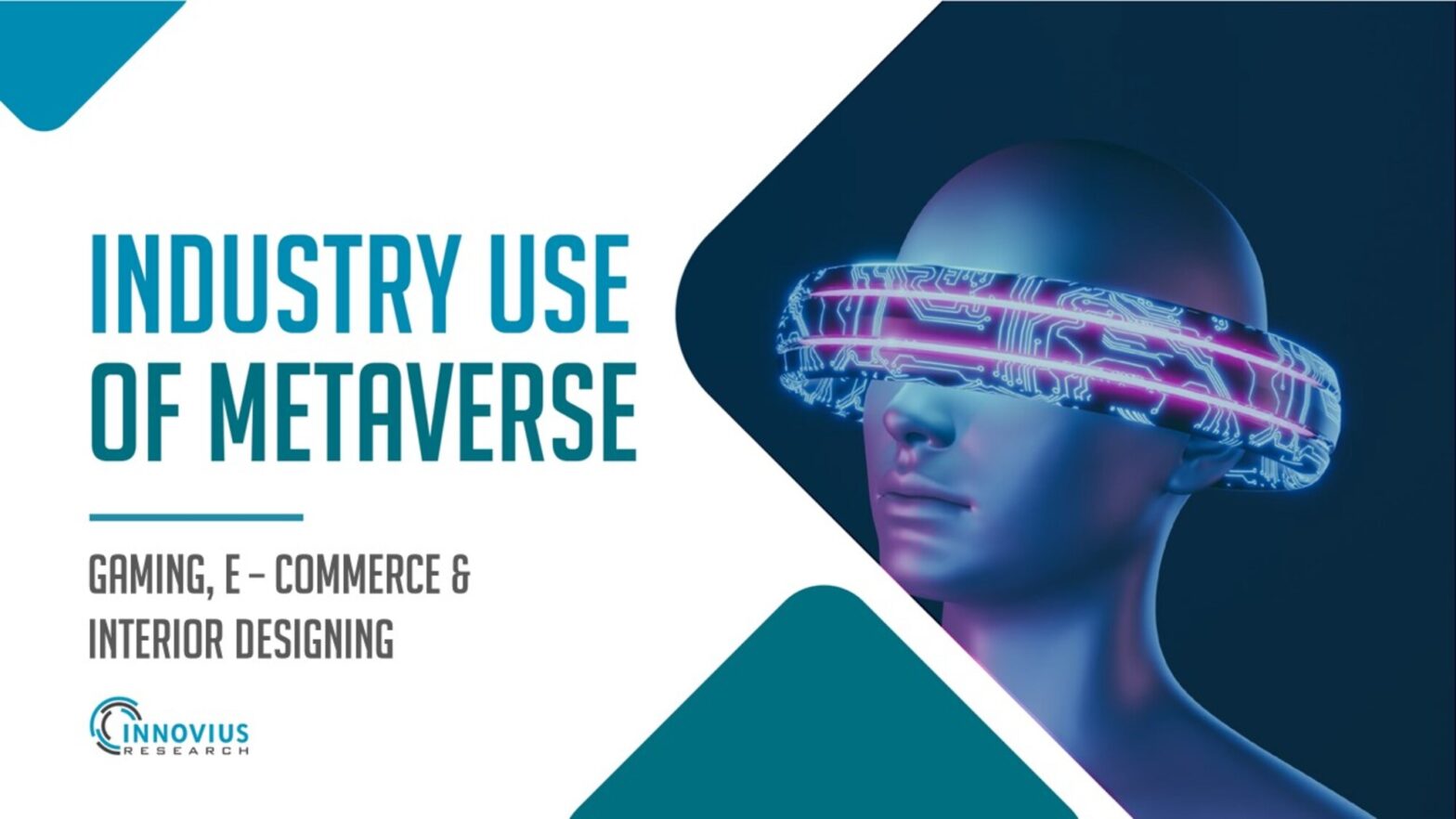
Use of Metaverse in Gaming, E-Commerce & Interior Designing
The World Of Virtual Reality- ‘Metaverse’ has an influence on nine different businesses. We are here to unveil the first 3 to you. There are more to enlighten about in future postings.
Gaming
Metaverse in gaming allows gamers to have an immersive experience in the virtual environment. It provides the possibility to engage users in a three–dimensional environment where they can interact more closely with the elements around them. In metaverse gaming, characters are controlled by avatars, which are virtual representations of actual individuals. Players may invite their social network friends to play the games with them, communicate with other players in the metaverse, and collaborate to enjoy the games as a team. The introduction of a metaverse in gaming, driven by disruptive VR technology, has created a whole new sense of reality in gaming. VR software allows gaming platforms to create a realistic experience by using 3-D graphics, VR headsets, full display panels, and rooms with sensory features such as to scents and tactile sensations. Gaming companies are stepping into the world of metaverse are as follows:
➟ Rec Rooms got a boost in its quest to be a significant player in the next great digital trend, the Metaverse, in 2021. Rec Room is a Meta-verse game with a broad range of settings that is played by the community. Players can dress up as a Rec Roomer, much like in previous Metaverse games. Rec Room is a virtual environment where players may interact with one another and socialize. Rec Room incorporates characteristics of VRChat while also gamifying the genre. Aside from simply hanging around, Rec Roomers may play a variety of games that the entire community can create.
➟ Roblox Corporation’s goal in 2021 was to create a creator economy metaverse by offering an open gaming platform that allowed players to create their own digital and interactive environments. It has a range of games on its platform, including virtual worlds where users may freely converse with one another.
E-Commerce
E-commerce in the metaverse is an emerging idea that will be available in the coming years when new features that integrate offline and online purchasing become available. E-commerce brands will be able to provide shoppers with a highly personalized digital experience through customized shopping via augmented reality technology, allowing consumers to be fully aware of the quality and fit of a product before purchasing it. Metaverse will start the Immersive Commerce (I-Commerce) era as a replacement for E-commerce, enabling retailers to experiment and co-create their items digitally through Direct–to–Avatar (D2A).
Virtual shopping through metaverse alters E-commerce from static product catalogs to real-time experiences such as providing customers the opportunity to walk around a store while viewing 3D-rendered retail displays via AR and VR technologies.
Major E-commerce players have already started establishing their foothold in the metaverse.
➟ Amazon has integrated metaverse technologies into its marketplace. Room Decorator, the company’s latest augmented reality shopping product, allows visualizing how furniture and other home decors would look in users’ space through their phones or tablets. Users can also view multiple products together and even save the AR snapshots of their room for later review.
➟ Forever 21 created a community-first brand experience for Roblox creators, designers, and influencers by launching a feature that enabled Roblox users to operate their own Forever 21 stores. The company provided the users with a location to display and sell their designs. Forever 21 is also planning to release new collections in both the physical and digital worlds at the same time, allowing users to match what they wear in real life with what their Roblox avatar wears.
Interior Designing
Metaverse Interior Design is a new service that connects interior designers to clients in the Metaverse who wish to design their dream homes. Interior design projects in the Metaverse will be fully incorporated into a variety of real locations. Interior designers and digital architects will cooperate in real-time to create these virtual spaces, fine-tuning them until they get the desired result. Physical objects that accompany augmented reality living will be maximized in Metaverse interiors.
Users and potential customers will be able to connect virtual living spaces created by Metaverse architects to objects in both worlds. Since Metaverse interiors do not require physical materials, they will save customers and designers money on manufacturing costs and lead times. Personalization of designed products and spaces will be accelerated as a result of this. For instance, if a potential customer wants a digital bed made of red plastic instead of mahogany, altering the material texture would only take a few minutes.
➟ Since 2019, Different AR tools, such as Drag’n’Fly 3D Viewer, Instant Scale, and AR Sketchwalk, have been developed by the Morpholio platform to help architects and interior designers virtualize and ‘live’ in their creations. This will help them construct better infrastructure and spaces.
➟ In 2022, Roar, an Emirati architecture and interior design firm, announced that it is expanding its business into the Metaverse, where it has purchased land for a new showroom. Roar has purchased two pieces of digital land in the 3D virtual world Decentraland, which it plans to turn into Roar Meta Space, a company that will create and build virtual property.
Data Sources: XRToday, LeewayHertz, Beeboom, Forbes, TheDigitalSpeaker,
Read more on Metaverse
Must Read

